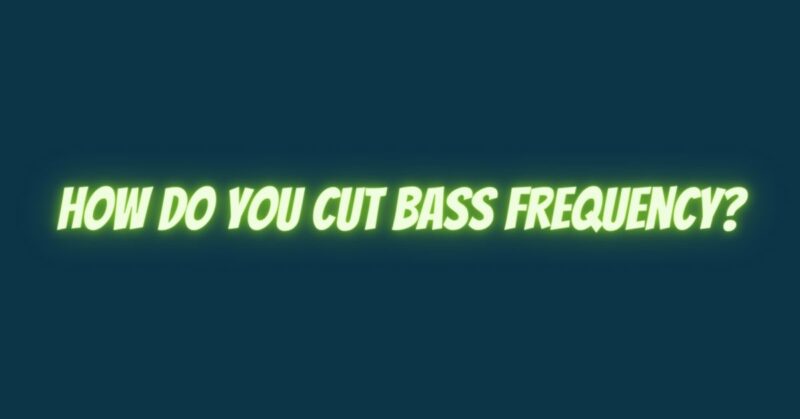Bass frequencies, often referred to as the low-end, play a fundamental role in music and audio. However, there are situations where you may need to cut or reduce bass frequencies to achieve a specific sound or address issues like muddiness or overpowering bass. In this article, we will explore various techniques and tools for cutting bass frequencies and offer insights into when and why you might want to use them.
Why Cut Bass Frequencies?
Before we dive into the methods of cutting bass frequencies, it’s essential to understand why you might need to do so. There are several reasons for reducing bass in audio:
- Muddiness: Excessive bass frequencies can create a muddy or boomy sound, making it challenging to discern other elements in the mix, such as vocals or midrange instruments.
- Clarity: Reducing bass can improve the clarity of a mix by allowing other instruments and vocals to stand out more prominently.
- Room Acoustics: In some cases, room acoustics can emphasize bass frequencies, leading to an unbalanced sound. Cutting bass can help mitigate this issue.
- Speaker Limitations: Some speakers or headphones may struggle to reproduce very low frequencies accurately. Cutting bass can prevent distortion and improve overall audio quality.
Methods for Cutting Bass Frequencies
There are several methods and tools available for cutting or reducing bass frequencies in audio:
1. Equalization (EQ):
Equalization is one of the most common methods for adjusting the frequency balance in audio. You can use EQ to reduce specific bass frequencies by selecting the corresponding frequency range and lowering the amplitude.
- Parametric EQ: Allows precise adjustment of frequency, bandwidth, and gain, making it effective for surgically cutting specific bass frequencies.
- Graphic EQ: Provides sliders for different frequency bands, allowing you to lower the bass frequencies by adjusting the corresponding sliders.
2. High-Pass Filter:
A high-pass filter (HPF) is a filter that allows frequencies above a certain cutoff point to pass through while attenuating frequencies below that point. HPFs are effective for cutting out excessive low-end rumble or unwanted bass frequencies.
3. Shelf EQ:
Shelf EQs are used to cut or boost a range of frequencies above or below a specified cutoff frequency. A low-shelf EQ can be employed to reduce bass frequencies while leaving midrange and high frequencies unaffected.
4. Sidechain Compression:
Sidechain compression is a technique used in music production to automatically reduce the bass level of one track when another track is playing. It’s often used to create a “pumping” effect in electronic music but can also be used more subtly to control bass levels.
5. Volume Fader:
Simply lowering the volume of a track or instrument that contributes to excessive bass can be an effective way to reduce bass frequencies in a mix.
When to Cut Bass Frequencies
Knowing when to cut bass frequencies is as important as knowing how to do it. Here are some scenarios where cutting bass frequencies may be necessary:
- Mix Balance: When other elements in the mix are being overshadowed by excessive bass, cutting bass frequencies can help create a more balanced mix.
- Room Acoustics: In acoustically problematic rooms where bass frequencies are emphasized, cutting bass can help mitigate the room’s negative impact on sound quality.
- Speaker Limitations: If your playback system (speakers or headphones) cannot accurately reproduce very low frequencies, cutting bass can prevent distortion and improve audio quality.
- Creative Sound Design: In music production, cutting bass frequencies can be a creative choice to shape the sound and create unique textures or effects.
Cutting bass frequencies is a valuable skill for audio engineers, producers, and anyone involved in sound design. Whether you need to create a more balanced mix, address room acoustics, or enhance audio clarity, understanding the methods and techniques for cutting bass frequencies can help you achieve your desired sound. Remember that the appropriate approach depends on the specific context and goals of your audio project, so always use your ears as your ultimate guide when making adjustments to bass frequencies.


